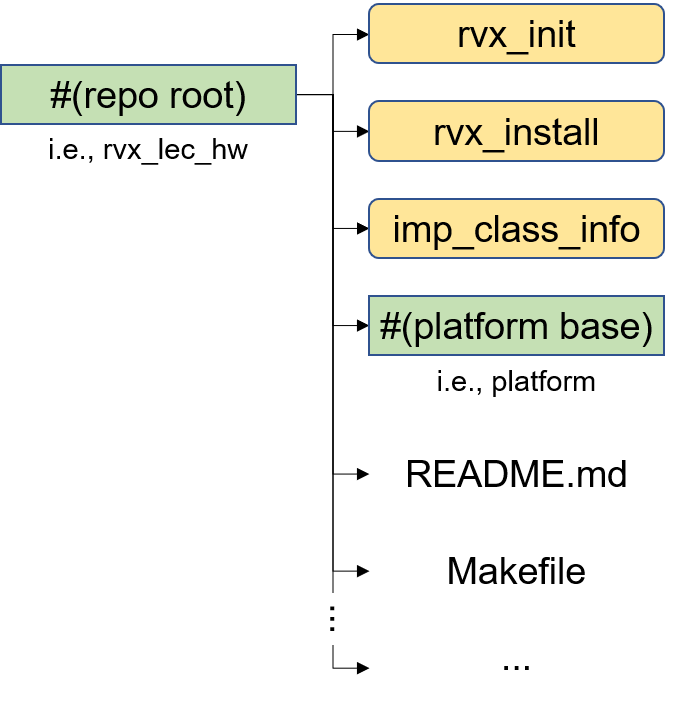
v2025-07-10 or later
This manual is intended to help you build your own design repository that is capable of utilizing RVX.
This method creates the design repository from scratch and is only available in RVX-cloud.
All results produced using RVX are subject to the following conditions:
They must not be used beyond the predefined purpose and scope specified in advance for a particular class or research project.
They must not be distributed to third parties other than the designated users or organizations.
They are free for non-commercial research use, provided that the paper is cited. All other uses require prior approval and a technology transfer agreement.
Manuals are available online - riscvexpress.github.io
Any part starting with # should be replaced or modified according to your environment.
On Linux, use the bash shell for command-line operations.
On Windows, use the Windows Power Shell for command-line operations.
Create your git repository on a hosting service or a self-managed server.
Names with generic meanings are strictly prohibited, as RVX features are deliberately disabled for repositories with such names.
The following are examples of prohibited names.
rvx_etri, rvx_platform, rvx_alpha, rvx_beta, ...
This list may be updated at any time without prior notice.
Clone your repository onto your local machine.

Clone your repository.
Denote the root directory of the git repository as #(repo root).
Add the following git repositories as submodules under #(repo root).
https://github.com/rvx-etri/rvx_init.git
https://github.com/rvx-etri/rvx_install.git
Copy the contents of #(repo root)/rvx_install/mini_git into #(repo root)
Refer to Figure 1.
For imp_class_info directory,
It contains information about FPGA or SoC boards.
Thus, only the necessary board files need to be copied.
Or, you may create a symbolic link to imp_class_info instead.
Add the copied contents to git.